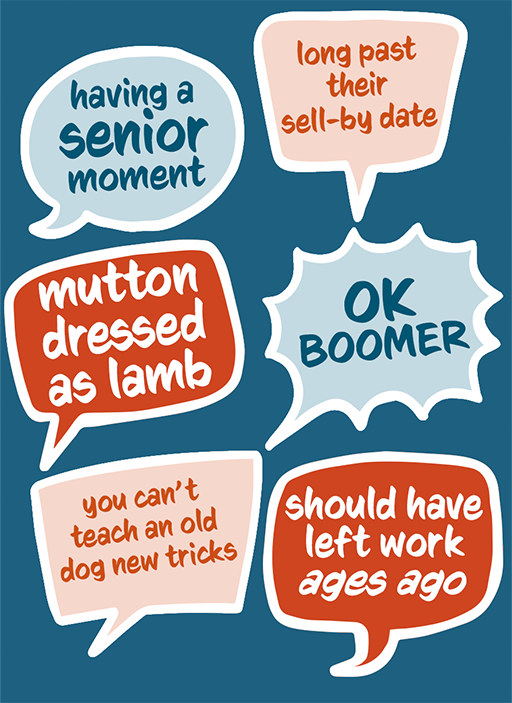1.1.1 Language
A good example of how common or prevalent ageism against older people can be is to examine language we may have encountered in our day to day lives.
Activity 2
What do you think about the statements in the word balloons below?
Do you think these statements are benevolent or hostile?
Do you ever question them when you hear them? Have you used them yourself, even about yourself?
Comment
It’s important to think about these common statements as they have the power to influence our thinking and by extension, our behaviour.
They reinforce subtle and easy to miss messages: that in older age, we are passed our prime and that frailty, deteriorating mental or physical capabilities and dependence are the inevitable and defining characteristics of ageing.
There is no mention of experience, wisdom, or having more confidence.
Lots of these statements are about identity, older people should behave in an ‘age appropriate’ manner and succession, older people have ‘had their turn’ and should make way for younger people (‘boomers’ and the idea that older people should make way in workplaces to give jobs for younger people).
There is also a gender link. For example, we have found more negative ageism against older women than older men, enhanced by phrases like ‘mutton dressed as lamb’.
If your work involves communicating with the public, the Older People’s Commissioner for Wales has produced a guide on avoiding ageism in professional communications.
Download: How to avoid ageism in communications [Tip: hold Ctrl and click a link to open it in a new tab. (Hide tip)] (PDF, 631 KB)
This guide will also be available in the resources section at the end of the course.

